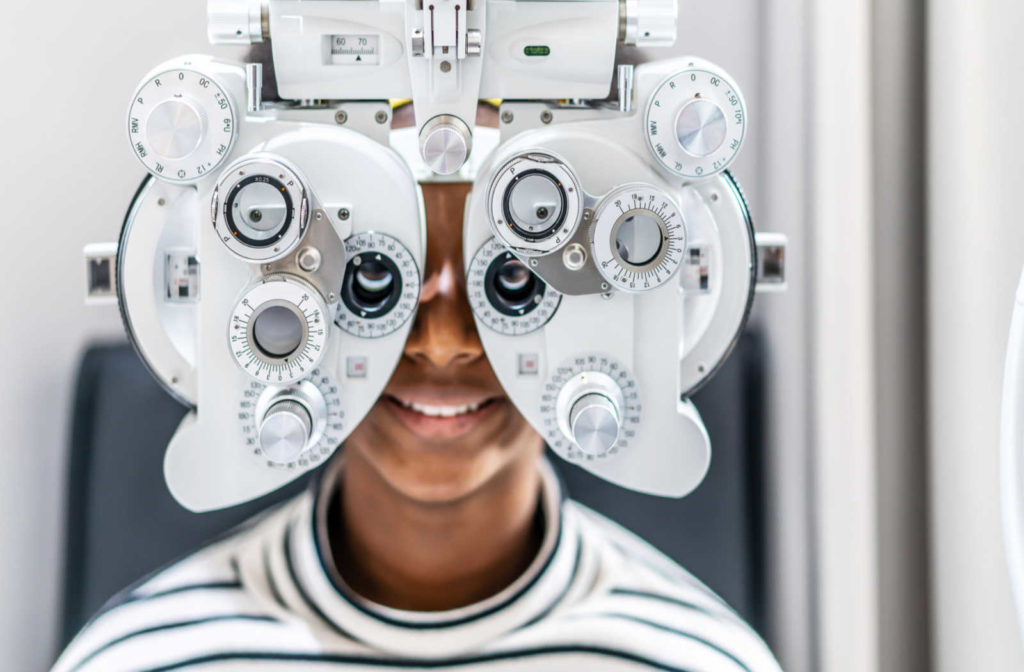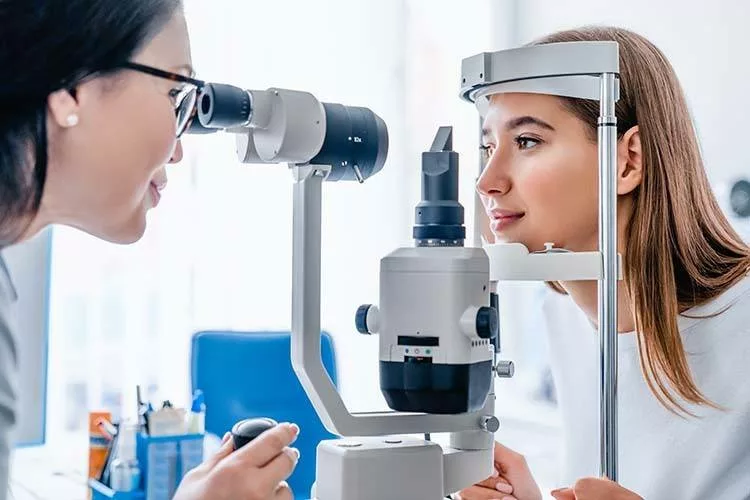Check Out the most effective Optometrist Chino for Comprehensive Eye Care
Check Out the most effective Optometrist Chino for Comprehensive Eye Care
Blog Article
Discovering the most recent Technological Developments in Optometry and What They Mean for Eye Doctors
In the ever-evolving area of optometry, current technological developments are reshaping just how practitioners come close to eye care. From the accuracy of Optical Coherence Tomography to the nuanced understandings supplied by AI-driven diagnostic tools, these innovations are setting new requirements in individual analysis and therapy. Teleoptometry is positioned to redefine access, making sure that experience transcends geographical constraints. As these advancements permeate the practice, optometrists are faced with the difficulty of accepting these devices to improve client results. Yet, the question continues to be: just how will these technological shifts redefine the functions and responsibilities within the profession?
Advancements in Diagnostic Tools
Progressing the field of optometry, developments in diagnostic tools have changed the means eye treatment professionals evaluate and detect eye problems and aesthetic problems. The previous years has observed substantial technological improvements, enabling more exact and comprehensive analyses. Optical Comprehensibility Tomography (OCT), for instance, gives high-resolution cross-sectional photos of the retina, permitting the early discovery of conditions such as glaucoma and age-related macular deterioration. This non-invasive imaging technique has actually ended up being important in contemporary optometric technique.
One more secret advancement is the introduction of advanced corneal topography systems, which map the surface area curvature of the cornea with precision. These tools are especially beneficial for fitting contact lenses and identifying corneal conditions. Electronic retinal imaging has actually changed conventional ophthalmoscopy, using in-depth, scenic views of the retina that help with thorough visual examinations.
The development of wavefront aberrometry has likewise been crucial, making it possible for the evaluation of refractive mistakes with unparalleled accuracy (Eye Doctor Optometrist). This modern technology assists in personalizing corrective lenses and improving medical end results for refractive surgical treatments. Collectively, these diagnostic innovations empower optometrists to deliver exceptional individual treatment, making certain very early treatment and customized treatment techniques, inevitably enhancing aesthetic health end results
AI in Person Monitoring
Building on the structure of innovative analysis tools, the unification of artificial knowledge (AI) in person monitoring represents a transformative jump for optometry. AI systems are significantly used to improve efficiency, precision, and personalization in client treatment.
Furthermore, AI-driven systems facilitate streamlined patient interactions and administrative procedures. Automated organizing, virtual assessments, and customized follow-up strategies not just enhance individual complete satisfaction however likewise enhance time monitoring for specialists. These systems can triage patients based upon the urgency of their problems, making certain that those in vital need receive prompt focus.
Additionally, AI improves decision-making by offering eye doctors with evidence-based suggestions and therapy paths. By integrating information from digital wellness documents, AI tools offer insights that inform scientific choices, minimizing the risk of errors and improving patient outcomes. As AI remains to progress, its duty in patient management will likely expand, improving the landscape of optometric care.
Advances in Retinal Imaging
In the world of optometry, retinal imaging has actually experienced remarkable technological innovations that are improving diagnostic capabilities and client care. Technologies such as Optical Comprehensibility Tomography (OCT) and fundus photography have actually reinvented how eye doctors analyze the retina and imagine.
Improved imaging techniques like OCT angiography are more refining analysis precision. This non-invasive technique maps blood flow in the retina, providing crucial understandings into vascular wellness without the demand for dye shots. In addition, flexible optics innovation is being incorporated into retinal imaging systems to remedy eye aberrations, delivering unmatched image quality. Such advancements help with the identification of minute retinal adjustments that can represent illness development.
Furthermore, improvements in artificial intelligence are enhancing retinal imaging by making it possible for automated analysis of huge datasets. These systems aid eye doctors in identifying patterns indicative of pathology, thus enhancing analysis precision and effectiveness. Collectively, these innovations are changing retinal imaging right into a cornerstone of contemporary eye treatment, improving results and increasing healing opportunities.
Teleoptometry's Growing Duty
Teleoptometry is increasingly coming to be an essential element of eye care, driven by developments in data and analysis tools. As optometry embraces digital makeover, site link teleoptometry promotes remote assessments, permitting optometrists to expand their services past standard borders. This is specifically beneficial in rural and underserved areas where access to specialized eye treatment is typically limited. By leveraging high-resolution video clip conferencing and progressed retinal imaging, eye doctors can conduct detailed eye examinations from afar, making certain prompt medical diagnosis and therapy.
The combination of expert system (AI) further enhances teleoptometry, making it possible for the evaluation of visual data and aiding in the discovery of eye problems such as glaucoma and diabetic retinopathy. AI-powered formulas can swiftly analyze intricate imaging information, offering eye doctors with beneficial insights that reinforce medical decision-making.
Furthermore, teleoptometry supports continuity of treatment via seamless combination with digital wellness documents (EHRs), enabling eye doctors to maintain thorough person histories. This makes sure that clients get customized and constant care even when seeking advice from various specialists.
Despite these benefits, challenges continue to be, consisting of making sure information security and managing client assumptions. However, teleoptometry represents a considerable stride in the direction of more easily accessible, reliable, and patient-centered eye treatment. As technology advances, its function is poised to broaden even more.

Future Trends in Eye Care
A myriad of ingenious trends is established to improve the future of eye care, driven by technological innovations and the advancing demands of clients. One considerable trend is the integration of fabricated knowledge (AI) in diagnostics, which assures to boost the precision and efficiency of eye exams. AI formulas can assess huge amounts of information from retinal photos, possibly detecting problems like diabetic retinopathy and glaucoma earlier than conventional methods.
Additionally, personalized medicine is getting traction in optometry, with genetic testing educating tailored therapy plans. This approach intends to enhance patient results by tailoring treatments to individual genetic accounts. Wearable innovation, such as smart get in touch with lenses, is also coming up, providing real-time monitoring of intraocular pressure or sugar degrees, hence supplying constant insights into systemic and ocular health and wellness.
The fostering of augmented reality (AR) and virtual fact (VR) in training and individual education is one more emerging trend. These innovations supply immersive experiences that can improve understanding and abilities both for clients and eye doctors. As these trends develop, eye doctors need to remain abreast of technological innovations to supply sophisticated care, making sure better patient outcomes and satisfaction in the dynamic landscape of eye Discover More treatment.
Conclusion

Collectively, these diagnostic advancements encourage optometrists to deliver remarkable individual care, making sure very Continued early treatment and customized treatment approaches, inevitably enhancing aesthetic wellness end results.

As these innovations proceed to evolve, optometrists should adjust and integrate them into method, ultimately optimizing workflow performance and elevating the standard of eye treatment supplied to individuals.
Report this page